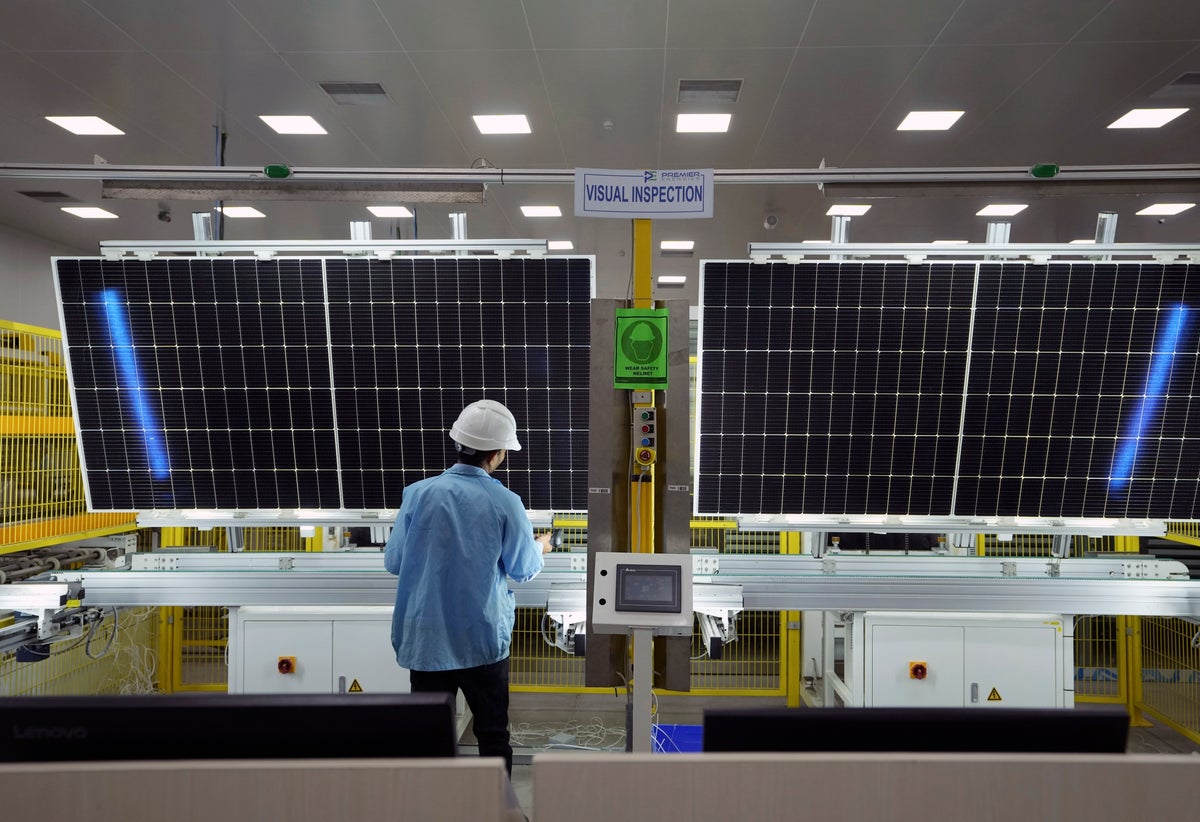
In May last year Fortum India, a subsidiary of a Finnish solar developer, won the bid for a solar power project in the state of Gujarat. The project was due to be completed three months ago and would have generated enough electricity for 200,000 homes.
But like many other solar power projects in the country, it's been delayed as Fortum India struggles to source and pay for necessary components.
“For the last six months, we have not been able to finish developing any new projects,” said Manoj Gupta, who oversees Fortum India's solar projects in India.
Gupta said solar panels and cells have become obstructively expensive because of protective taxes the Indian federal government implemented in April last year. The basic customs duty imposes a levy of 40% on imported solar modules and 25% on solar cells.
The government says it wants to encourage the domestic manufacture of components required to produce solar power and reduce the country's reliance on imports.
But solar developers say homegrown producers, while rapidly growing and being pushed along by policy initiatives, are still too fledgling to meet demand. Current cell and module manufacturing capacity in India is around 44 gigawatts per year, just a fraction of what's needed to meet India's renewable aims.
In 2022, India had a target to install 100 gigawatts of solar energy as part of goal to add 175 gigawatts of clean electricity to its grid. But only 63 gigawatts of solar power were ultimately installed last year, according to Indian federal government data. India missed its 2022 renewable energy target by just nine gigawatts.
“Without these duties we would have easily achieved our targets for larger solar projects, at least,” said Jyoti Gulia of the renewable energy research and advisory firm JMK Research.
Most solar developers in India and around the world rely on China, with the nation producing more than 80% of the world's solar components, according to the International Energy Agency. Many countries have tried to encourage domestic production to limit dependence on the country. The United States' recent climate law, for example, also incentivizes homemade renewable energy manufacturing.
“China controls the market and we saw during both the pandemic and the geopolitical conflict between our countries that they just stopped the supply chain completely,” said Chiranjeev Saluja from the Indian solar manufacturer Premier Energies. “I think the government wants to develop the whole solar ecosystem, that is the intent behind such policies.”
Saluja added that a bustling solar manufacturing industry also had wider economic benefits.
“The jobs in manufacturing are well-paying, secure jobs. And while developers employ only a handful of people, to manufacture cells required to produce one gigawatt of solar energy, you will need at least 500 people,” he said.
A 2022 report found that India’s renewable energy sector could employ more than one million people by 2030, but only if domestic manufacturing continued to scale up considerably.
Another Indian government policy that mandates that solar components can only be bought from government-approved manufacturers to ensure that the modules and cells are of good quality is also stalling projects, according to analysts.
Developers are unable to purchase from southeast Asian countries as manufacturers there have yet to be approved or have not applied. Many of those countries have free trade agreements with India which would make them exempt from import taxes.
“The situation is quite grim today,” said Vinay Rustagi, managing director at the renewable energy consultancy Bridge to India. “Global supply chain issues, material shortages and, of course, the duty on solar components has led to a lot of projects being postponed.”
Rustagi said the growth in domestic manufacturing as a result of the tax is “encouraging, but I do not think it is sustainable.” He added that the government “should be aiming to create strong domestic capabilities that can be a preferred choice without any taxes or duties.”
Solar manufacturers do not agree.
“We have allowed for dumping from other countries for too long. Otherwise domestic manufacturing would have taken a strong root already,” said Gyanesh Chaudhary, vice chairman at Vikram Solar, an Indian solar manufacturer.
“These taxes and policies were announced well in advance and there was enough time to factor them into costs,” Chaudhary said. “Mandates such as the approved list of manufacturers are to make sure the quality of products coming into India are of a certain minimum quality.”
But Srivatsan Iyer of solar developer Hero Future Energies said the unpredictability of the sector made it hard to factor in the extra costs.
“Land, connectivity to the project site, supply chain issues are just some dynamic factors and, of course, the pandemic,” said Iyer of the difficult landscape for solar projects. “With these duties, clean power is just more expensive for India now.”
Iyer is worried that the extra costs could also thwart India's next renewable energy target in 2030. But he's hopeful the government might defer some duties in the upcoming federal budget announcement scheduled for Feb. 1.
The government hasn't yet given any indication that it will make amendments to its tax policy.
___
Follow Sibi Arasu on Twitter at @sibi123







